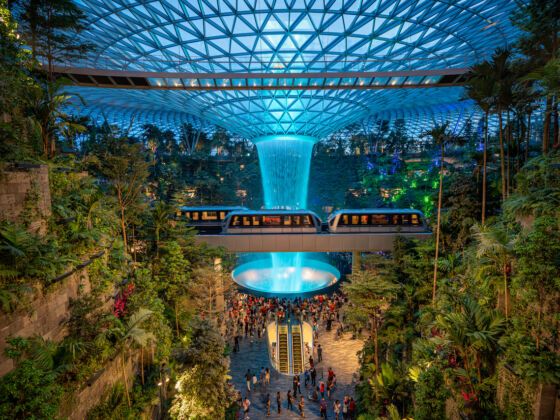Dallas Fort Worth (Terminal D)
Completed in 2005, DFW is capable of handling up to 37,000 passengers per day with the aid of Skylink- the world’s largest airport train. The first major American airport terminal to be built post 9/11, the terminal features the most advanced security features available with state of the art systems.
